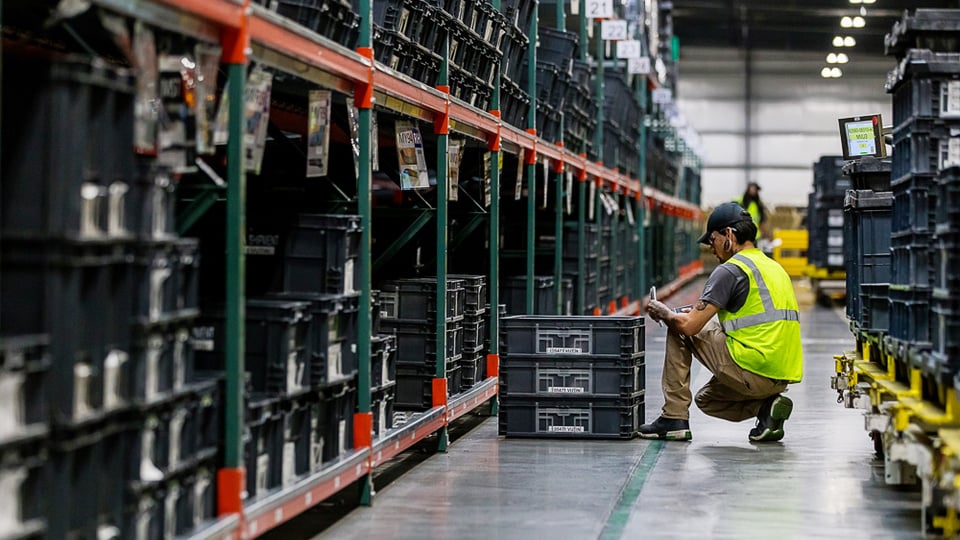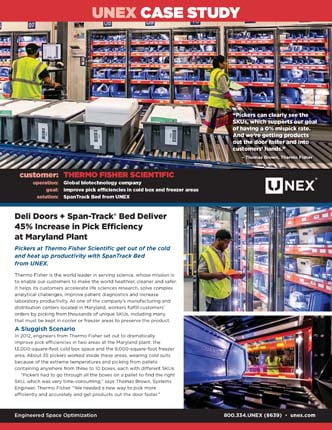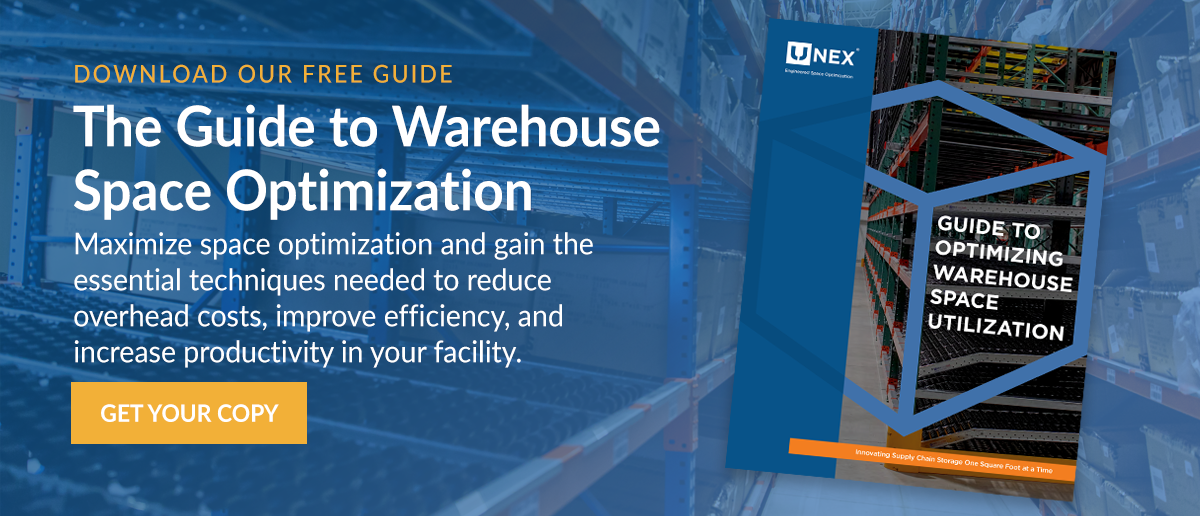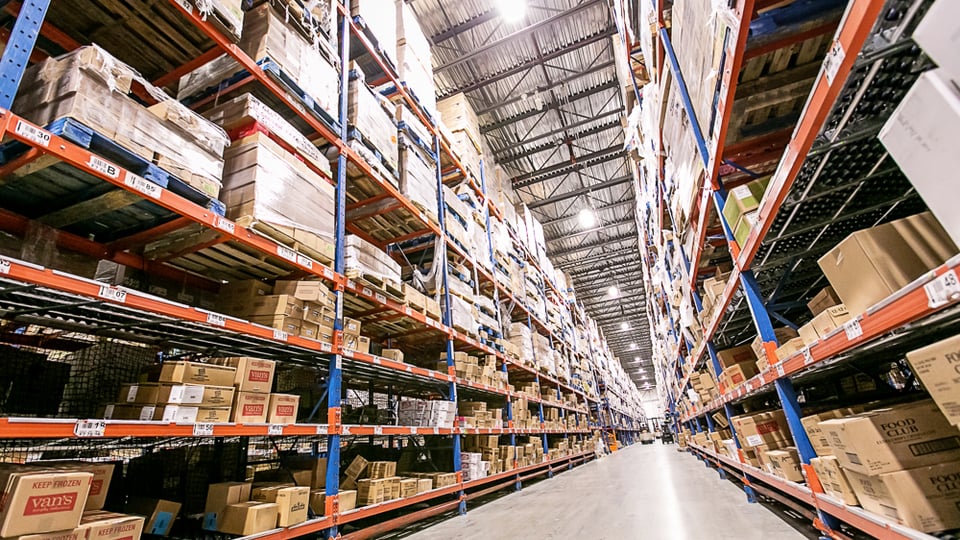Labor Shortage? Efficiency May Be the Solution

What do you see as your biggest challenge over these past few years? A driver shortage, lack of warehouse talent, and a dire need for supply chain talent in general? Everyone in the warehousing industry seems to be experiencing a labor shortage, whether it’s for driving deliveries from stores to homes or transporting inventory from a supplier to distribution points, or picking orders in the warehouse.
As eCommerce sales growth continues to outpace brick-and-mortar stores, experts say retailers are having trouble filling positions in the heart of their digital operations—their warehouses. With nearly 17,000 warehouses and distribution centers in the US, there are a lot of positions to fill. With labor costing between 50 and 70 percent of the average company’s warehousing budget, improving productivity and efficiencies can help keep costs in check.
The Ripple Effect of Labor Shortages in Warehousing
The ongoing labor shortage is more than just a hiring challenge—it creates a domino effect across warehouse operations. Below are some key areas being impacted:
- Decline in Order Fulfillment Speed: Without enough workers to process orders, warehouses struggle to meet increasing customer expectations for fast delivery, especially in eCommerce.
- Increased Error Rates: Overburdened workers are more prone to errors, leading to misplaced inventory, incorrect orders, and damaged goods, which hurt customer satisfaction and revenue.
- Higher Operational Costs: With fewer employees available, companies often resort to costly temporary staffing, overtime, or hiring bonuses to cover gaps, further straining budgets.
- Strained Workers and Turnover: Remaining employees face heavier workloads, leading to burnout, higher turnover rates, and increased injury risks.
- Space Utilization Challenges: Labor shortages make it harder to reorganize inventory and improve storage layouts, leaving businesses unable to make the most of their existing space.
- Bottlenecks in Supply Chain Operations: Insufficient staffing causes delays in the movement of goods between warehouses, stores, and customers, exacerbating supply chain inefficiencies.
These challenges collectively hinder operational efficiency, increase costs, and impact a company’s ability to scale and compete in a fast-paced market.
Strategies to Mitigate the Labor Shortage
The 2017 3PL Logistics Study sponsored by CSCMP and others, talks about the rapidly aging workforce in the warehousing industry. It suggests several strategies to deal with the warehouse labor shortage, including:
- Automation: Introducing robots and other automation technologies to accelerate order fulfillment.
- Labor Management Systems (LMS): Implementing software to optimize labor allocation based on demand forecasts.
- Workforce Diversity: Encouraging the recruitment of women, who currently make up a relatively small percentage of the logistics workforce.
- Flexible Work Schedules: Offering flexible hours to improve work-life balance and attract more talent.
While these are all effective strategies, UNEX offers solutions to optimize warehouse operations and reduce dependency on manual labor. Space optimization systems such as carton flow storage solutions, high-density storage, and modular flow racks can help streamline workflows, reduce travel time, and maximize storage density. These systems not only enhance productivity but also alleviate the physical strain on workers, leading to lower turnover rates and improved morale. By relying on solutions designed to eliminate inefficiencies, companies can achieve greater throughput with fewer employees.

The UNEX Solution: Thermo Fisher’s Success Story
Thermo Fisher Scientific, a global leader in biotechnology, faced significant challenges in improving pick efficiency within their Maryland plant’s cold box and freezer areas. With thousands of unique SKUs and only 35 pickers working in extreme conditions, the company struggled to maintain accuracy and speed in their operations. Workers spent valuable time climbing ladders, sorting through pallets, and enduring 12-hour shifts in cold suits.
To tackle these challenges, Thermo Fisher redesigned their cold storage areas with UNEX SpanTrack Wheel Bed and the results were transformative. With the same amount of staff, Thermo Fisher was able to increase their picking efficiency by 45% and reduced saved costs by reducing their shifts from 12-hours to 8-hours. The redesign not only improved efficiency but also set the foundation for Thermo Fisher’s future growth.
Learn how ThermoFisher used SpanTrack to improve picking efficiency and accuracy. Download the Case Study.

UNEX Solutions Optimize Efficiency to Bridge the Labor Gap
UNEX specializes in engineered space optimization solutions that tackle the inefficiencies and labor shortages faced by warehouses today. Here’s how our products address these challenges:
SpanTrack Carton Flow Solutions
 UNEX offers high-performance carton flow solutions designed to maximize storage density and picking efficiency. SpanTrack Lane offers dedicated, full-width roller lanes for FIFO inventory rotation, delivering 300% more surface contact than plastic wheel rails for smooth, reliable product flow. SpanTrack Wheel Bed allows for flexible SKU slotting, with a hex hub wheel design that ensures optimal flow and easy replenishment.
UNEX offers high-performance carton flow solutions designed to maximize storage density and picking efficiency. SpanTrack Lane offers dedicated, full-width roller lanes for FIFO inventory rotation, delivering 300% more surface contact than plastic wheel rails for smooth, reliable product flow. SpanTrack Wheel Bed allows for flexible SKU slotting, with a hex hub wheel design that ensures optimal flow and easy replenishment.
Both solutions feature a drop-in design for seamless integration into existing pallet racks, improving order picking accuracy while reducing labor costs and picker travel time. Built to withstand demanding warehouse environments
 SpeedCell High-Density Storage Solutions
SpeedCell High-Density Storage Solutions
SpeedCell transforms warehouse storage by maximizing storage density by up to 60% within the same footprint, enabling businesses to store more SKUs efficiently. This high-density storage system also minimizes picker travel, improving speed and order accuracy. Additionally, its ergonomic design reduces strain on workers, promoting a safer work environment and enhancing overall productivity.
 FlowCell Modular Workstations
FlowCell Modular Workstations
FlowCell supports lean manufacturing principles by organizing inventory effectively and maximizing the use of available space. These modular workstations are highly flexible and can be easily reconfigured to meet changing operational needs. By reducing physical strain on workers, FlowCell enhances ergonomics, lowers injury risks, and contributes to higher employee retention.
 Gravity Conveyors
Gravity Conveyors
Gravity conveyors are designed to streamline movement in assembly lines, shipping areas, and receiving operations. These systems improve throughput by facilitating smooth and efficient material flow. Customizable and built for durability, they are suited for a wide range of applications and require minimal maintenance, making them an excellent choice for warehouses looking to enhance efficiency.
Solve for Today's Labor Shortage with UNEX
The labor shortage in today's warehouses is a pressing issue, but solutions exist. By focusing on automation, flexibility, and operational efficiency, companies can mitigate these challenges. UNEX products are specifically designed to tackle inefficiencies, optimize workflows, and help your team work smarter—not harder.
Contact us today to learn more about how our innovative solutions can transform your warehouse operations.



